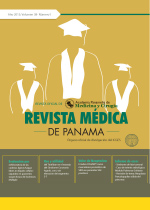Evaluación del Riesgo, Tamizaje, Diagnóstico Clínico – Patológico y Estadificación del Cáncer de Mama: 1er Consenso Nacional del Cáncer de Mama de la Sociedad Panameña de Oncología (SPO)
Autores/as
DOI:
https://doi.org/10.37980/im.journal.rmdp.2019795Resumen
Risk Assessment, Screening, Clinical - Pathological Diagnosis and Staging of Breast Cancer: 1st National Consensus of Breast Cancer of the Panamanian Society of Oncology (SPO)
Resumen
El cáncer de Mama es el tumor más frecuente de la mujer y su incidencia va en aumento. En la atención primaria del paciente, se debe establecer el riesgo de padecer cáncer de mama durante la vida, a través de una historia clínica orientada a los factores de riesgo familiares e individuales, de tal forma que podamos implementar las estrategias de tamizaje apropiadas. Las estrategias de tamizaje deben ser aplicadas de manera sistemáticas, y los resultados anormales referidos a un centro con experiencia en el diagnóstico. Los pacientes diagnosticados deben ser evaluador por un equipo multidisciplinario con experiencia en el manejo de la muestra, estadificación y tratamiento del cáncer de mama.
Summary
Breast cancer is the most frequent tumor in women and its incidence is increasing. In the primary care of the patient, the risk of suffering from breast cancer should be established during life, through a clinical history focused on family and individual risk factors, in such a way that we can implement the appropriate screening strategies. Screening strategies should be applied systematically, and abnormal results referred to a center with experience in diagnosis. Patients diagnosed should be evaluated by a multidisciplinary team with experience in the management of the sample, staging and treatment of breast cancer.sk Assessment, Screening, Clinical - Pathological Diagnosis and Staging of Breast Cancer: 1st National Consensus of Breast Cancer of the Panamanian Society of Oncology (SPO)
Publicado
Número
Sección
Licencia
Derechos autoriales y de reproducibilidad. La Revista Médica de Panama es un ente académico, sin fines de lucro, que forma parte de la Academia Panameña de Medicina y Cirugía. Sus publicaciones son de tipo acceso gratuito de su contenido para uso individual y académico, sin restricción. Los derechos autoriales de cada artículo son retenidos por sus autores. Al Publicar en la Revista, el autor otorga Licencia permanente, exclusiva, e irrevocable a la Sociedad para la edición del manuscrito, y otorga a la empresa editorial, Infomedic International Licencia de uso de distribución, indexación y comercial exclusiva, permanente e irrevocable de su contenido y para la generación de productos y servicios derivados del mismo. En caso que el autor obtenga la licencia CC BY, el artículo y sus derivados son de libre acceso y distribución.






